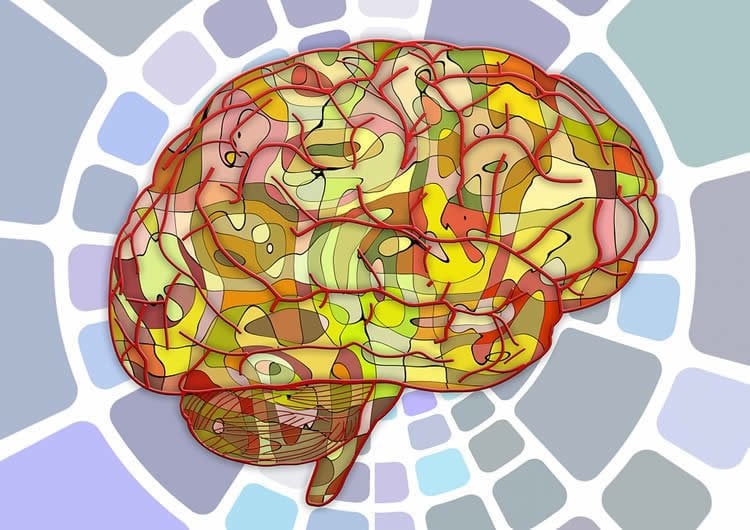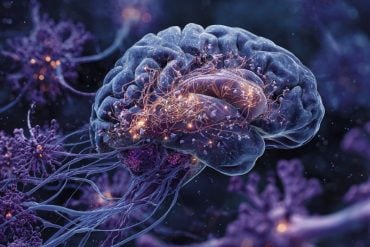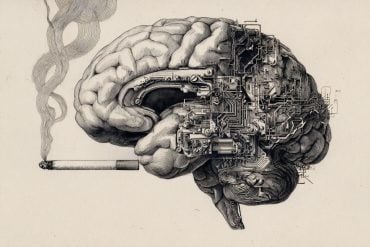Summary: A new meta-analysis of neuroimaging data reveals people with ASD process social and nonsocial rewards differently than those without an autism diagnosis.
Source: CHOP.
A pair of recent studies performed by researchers at Children’s Hospital of Philadelphia (CHOP) and the University of Pennsylvania represents a significant step forward in understanding the role of the brain’s “reward circuit” and certain hallmarks of autism spectrum disorder (ASD), namely difficulty interpreting or engaging in typical social behavior and restricted or repetitive interests or behaviors.
For years, researchers have attempted to use fMRI brain imaging studies to find a link between these behavioral traits and the way the brain processes rewards among people with and without ASD. Many of these studies sought evidence to support the social motivation hypothesis, which suggests that early in development, children with ASD attend less to social information such as faces or gaze direction, and thus have fewer opportunities for learning through observing others and developing critical social skills.
A team of researchers at CHOP’s Center for Autism Research (CAR) applied a newly-developed research method known as seed-based d mapping meta-analysis to combine the results of 13 fMRI studies on how people with ASD process rewards in the brain. In total, these studies included 259 individuals with ASD and 246 typically developing individuals. This meta-analysis revealed that individuals with ASD process social and nonsocial rewards differently than people not diagnosed with ASD. The study is the first to show conclusive imaging evidence that people with ASD find social and nonsocial images less rewarding, with the authors suggesting that future studies examine how the brain processes different types of nonsocial rewards, and how reward processing in ASD changes with age.
The results were published in the journal JAMA Psychiatry and were accompanied by an editorial.
“This study represents one of the first efforts to apply this new meta-analysis method of combining brain activity data from multiple neuroimaging studies to ASD,” said Caitlin Clements, a member of the Center for Autism Research (CAR) at CHOP, a doctoral student at the University of Pennsylvania Psychology Department and lead author of the paper. “By analyzing many studies, we hoped to show how the brain processes social and nonsocial rewards in a way that no single study has been able to do on its own. The results suggest that we broaden our understanding of the social motivation hypothesis to include atypical motivation for both social and nonsocial rewards.”

This meta-analysis complements neuroimaging research published earlier this year by CAR in the journal Molecular Autism. That paper studied the role of the reward system in repetitive behavior and restricted interests, another hallmark behavior of ASD. Children with ASD activated the reward circuit more for videos of a restricted interest (like the game Minecraft) than for videos of people smiling and giving them a “thumbs up” sign (a social reward). The reward circuit in typically developing children showed the opposite pattern —more activation for social rewards than interests. This study was one of the largest to-date in ASD, and the findings suggest that the social motivation hypothesis may be expanded to explain the presence of repetitive behaviors and restricted interests.
“These two studies demonstrate a growing body of evidence supporting the idea that there are key differences in how people with ASD process rewarding information in their brain,” said Dr. Benjamin Yerys, a psychologist in the Department of Child and Adolescent Psychiatry and Behavioral Sciences at CHOP, senior author of the Molecular Autism study and a co-author of the JAMA Psychiatry study. “By strategically targeting the reward system, we may be able to create more personalized and effective treatment practices that improve outcomes for individuals with ASD and their families.”
Funding: Funding support for the research in the JAMA Psychiatry paper came from the National Science Foundation Graduate Research Fellowship Program. Funding support for the research in the Molecular Autism paper came from grants from the National Institute of Mental Health under grants K23MH086111, R21MH092615, and RC1MH088791, a New Program Development Award through the Intellectual and Development Disabilities Research Center funded by the National Institute of Child and Human Development under grant P30HD026979, a grant from the Philadelphia Foundation, a grant from the Pennsylvania Department of Health (SAP #4100042728) and additional grants from Pfizer and the Robert Wood Johnson Foundation.
Source: Ben Leach – CHOP
Publisher: Organized by NeuroscienceNews.com.
Image Source: NeuroscienceNews.com image is in the public domain.
Original Research: Open access research for “Evaluation of the Social Motivation Hypothesis of Autism: A Systematic Review and Meta-analysis” by Caitlin C. Clements, MA; Alisa R. Zoltowski, BS; Lisa D. Yankowitz, MA; Benjamin E. Yerys, PhD; Robert T. Schultz, PhD; and John D. Herrington, PhD in JAMA Psychiatry. Published June 13 2018
doi:10.1001/jamapsychiatry.2018.1100
[cbtabs][cbtab title=”MLA”]CHOP “How the Brain’s “Reward Circuit” Plays a Key Role in Symptoms of Autism Spectrum Disorder.” NeuroscienceNews. NeuroscienceNews, 18 June 2018.
<https://neurosciencenews.com/reward-circuit-asd-9371/>.[/cbtab][cbtab title=”APA”]CHOP (2018, June 18). How the Brain’s “Reward Circuit” Plays a Key Role in Symptoms of Autism Spectrum Disorder. NeuroscienceNews. Retrieved June 18, 2018 from https://neurosciencenews.com/reward-circuit-asd-9371/[/cbtab][cbtab title=”Chicago”]CHOP “How the Brain’s “Reward Circuit” Plays a Key Role in Symptoms of Autism Spectrum Disorder.” https://neurosciencenews.com/reward-circuit-asd-9371/ (accessed June 18, 2018).[/cbtab][/cbtabs]
Abstract
Evaluation of the Social Motivation Hypothesis of Autism: A Systematic Review and Meta-analysis
Importance The social motivation hypothesis posits that individuals with autism spectrum disorder (ASD) find social stimuli less rewarding than do people with neurotypical activity. However, functional magnetic resonance imaging (fMRI) studies of reward processing have yielded mixed results.
Objectives To examine whether individuals with ASD process rewarding stimuli differently than typically developing individuals (controls), whether differences are limited to social rewards, and whether contradictory findings in the literature might be due to sample characteristics.
Data Sources Articles were identified in PubMed, Embase, and PsycINFO from database inception until June 1, 2017. Functional MRI data from these articles were provided by most authors.
Study Selection Publications were included that provided brain activation contrasts between a sample with ASD and controls on a reward task, determined by multiple reviewer consensus.
Data Extraction and Synthesis When fMRI data were not provided by authors, multiple reviewers extracted peak coordinates and effect sizes from articles to recreate statistical maps using seed-based d mapping software. Random-effects meta-analyses of responses to social, nonsocial, and restricted interest stimuli, as well as all of these domains together, were performed. Secondary analyses included meta-analyses of wanting and liking, meta-regression with age, and correlations with ASD severity. All procedures were conducted in accordance with Meta-analysis of Observational Studies in Epidemiology guidelines.
Main Outcomes and Measures Brain activation differences between groups with ASD and typically developing controls while processing rewards. All analyses except the domain-general meta-analysis were planned before data collection.
Results The meta-analysis included 13 studies (30 total fMRI contrasts) from 259 individuals with ASD and 246 controls. Autism spectrum disorder was associated with aberrant processing of both social and nonsocial rewards in striatal regions and increased activation in response to restricted interests (social reward, caudate cluster: d = −0.25 [95% CI, −0.41 to −0.08]; nonsocial reward, caudate and anterior cingulate cluster: d = −0.22 [95% CI, −0.42 to −0.02]; restricted interests, caudate and nucleus accumbens cluster: d = 0.42 [95% CI, 0.07 to 0.78]).
Conclusions and Relevance Individuals with ASD show atypical processing of social and nonsocial rewards. Findings support a broader interpretation of the social motivation hypothesis of ASD whereby general atypical reward processing encompasses social reward, nonsocial reward, and perhaps restricted interests. This meta-analysis also suggests that prior mixed results could be driven by sample age differences, warranting further study of the developmental trajectory for reward processing in ASD.






